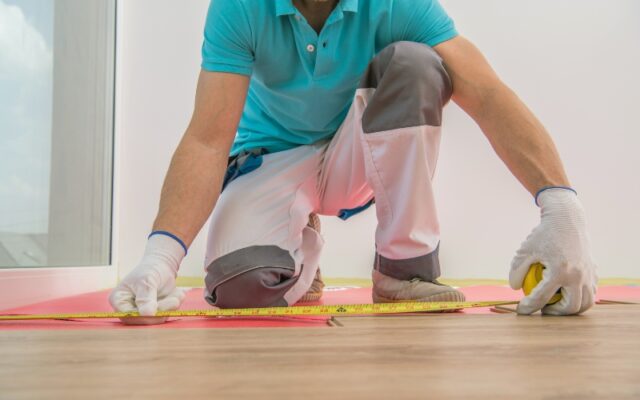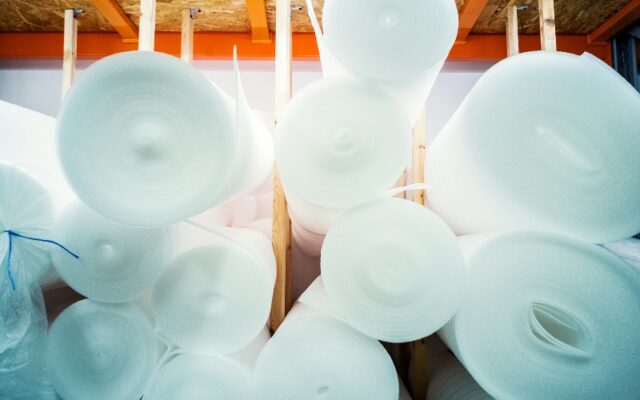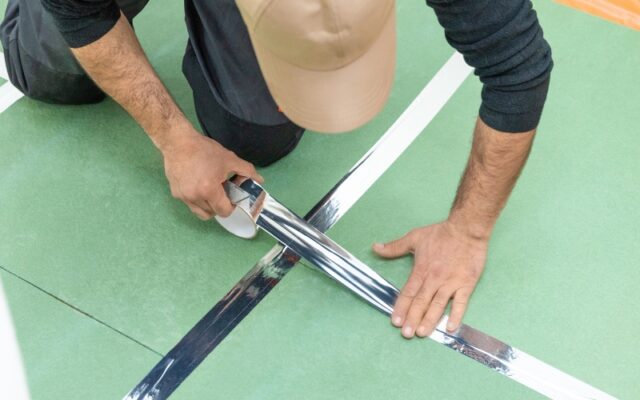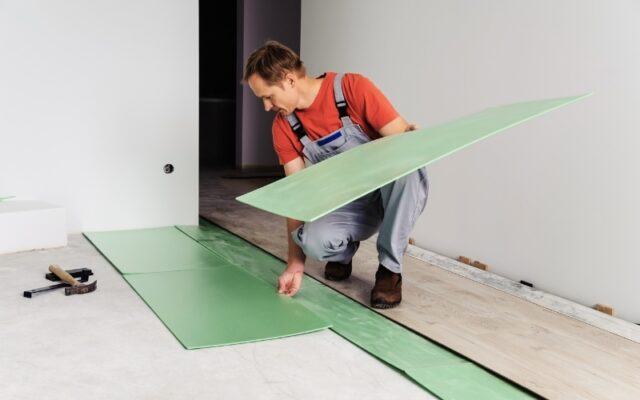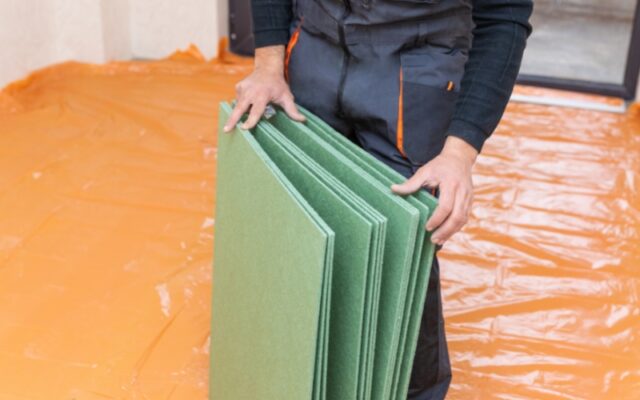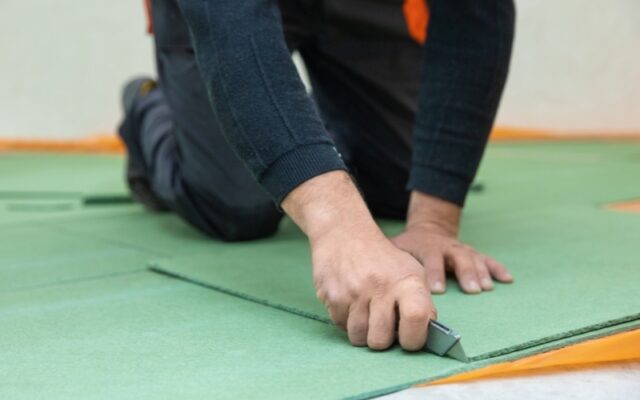
Are you moving into a new residential building or making alterations to the existing one in the form of laminate replacement?
If the answer is yes, you have to pay attention to one very important item, and that is the base on which your new laminate floor will be placed.
In other words, it’s important to consider underlayment. In order for this kind of flooring to serve its purpose, all the necessary components must be of good quality and installed correctly.
Apart from the careful selection of the laminate, the second most important thing is the substrate that is placed directly under it. This substrate is most often described as a spongy mass with a thickness of 3-7 mm.
Several different types can be used for these purposes, such as polypropylene, extruded polystyrene, and so on. Since there are so many different types of laminate flooring, they cover practically all situations you may find yourself in.
But despite the fact that there is a very good reason for applying the underlayment, many are still considering skipping this part and thinking if it is truly necessary…
Well, this guide is going to enlighten you with a couple of very important facts and examples of why underlayment is necessary…
When you speak to the manufacturers, they will always recommend doing the underlayment before actually placing the floor. While it is a safe, default choice, there truly are some cases in which it is not necessary.
One should always start with the manufacturer’s recommendations and thoughts before moving on to the opposite view.
Here are a couple of reasons and examples why underlayment is important
Sound: This kind of flooring is so thin that it needs extra help to feel and behave like real wood. After all, many choose it because it’s a great wood flooring alternative.
Consider audio transmission. You don’t need foam underlayment under solid hardwood for many reasons, and one of the reasons is that hardwood limits sound transmission, both inside the room and underneath.
On the other hand, laminate floors are thin – usually, no more than 12mm – and are made from a type of fiberboard. Thus, the underlayment increases the quality of sound-absorbing laminates.
On Concrete: When you’re setting up the floor on concrete, you may want to add some extra cushioning on that base, just to make it softer to walk on.
Note that underlays are not considered vapor barriers. Manufacturers usually recommend adding a vapor barrier next to the underlayment.
Moisture: You need an anti-moisture underlayment when there is a possibility of upward moisture migration: concrete slab, tile, cement board, and even wood sub-floor or under-paneling in a space or other space that is not air-conditioned.
Underlayment and a vapor barrier are not the same things. A regular foam pad will inhibit moisture. But there are types of underlayment that require a separate 6 mil. polypropylene vapor barrier.
Non-Profit Underlayment: This is the biggest issue of all, what the flooring manufacturer may call “floor irregularities”. This means that your floor surface is not perfectly flat.
Laminate floors do not have the ability to bridge these irregularities, therefore need underlayment in order to make the floor not only look good but also last longer. Solid or engineered wood can bridge small gaps.
Ceramic and porcelain tiles can bridge those gaps, but laminate without proper underlayment simply cannot.
The margin of safety for the company: product liability; providing broad security; and appealing to most installations: are some of the reasons why floor covering manufacturers make this recommendation.
This is the case for laminate manufacturers who want to ensure a few problems with the highest number of installations.
So, about those cases in which you don’t need it at all…
The only time you absolutely don’t need an underlayment is when it’s already there.
Some manufacturers produce this floor with already installed underlayment, saving you the time and energy of choosing the one perfect for your conditions.
It kind of simplifies the whole process. Now, more than half of these floors come with already built-in underlays, so the chances of your finding one are significantly increased.
Here we would like to draw your attention to one very specific situation, which is when you want to install underfloor heating under the laminate. It is important to know that there are specially designed laminates for this purpose.
Therefore, there is also underlayment whose specifications clearly indicate that it can be used for this type of work in your home. In most cases, manufacturers will offer you products with a series of smaller openings or perforations, which in practice has proven to be a very good solution.
As most of you reading this article have been wondering about the possibility of skipping underlayment because of financial reasons, here’s some useful information.
Since recently a large number of laminate underlays on the market are made from recycled material, their price has dropped significantly, and you can comfortably find a suitable one for a very reasonable amount of money.
In addition, the environment is preserved in this way because no new raw materials from nature are used. Therefore, installing underlayment will bring even more benefits.
We should not forget about those made of increasingly popular cork material. They are most often used in situations where floating floors are concerned, and they have also found their application in settings under laminate.
In some regions, the use of cork flooring has not yet reached its peak, although its advantages are increasingly recognized. These will surely rise in popularity with time.
To conclude…
Floors are an investment you want to make in a long run, which makes trying to save on things like underlayment probably a bad idea.
It may save you money now, but in a long run, you’re bound to have problems at one point. As a result, you’re probably going to install new flooring, this time, with underlayment.

